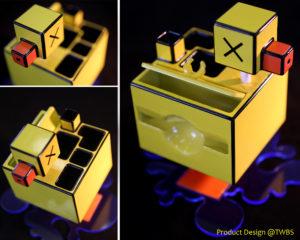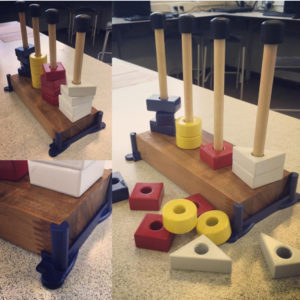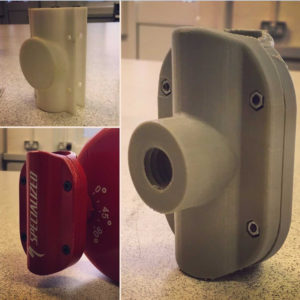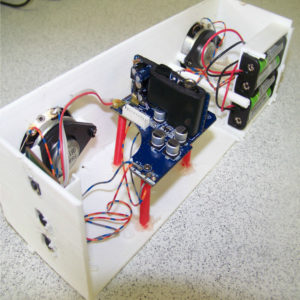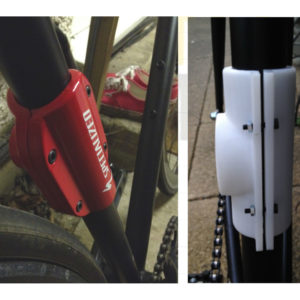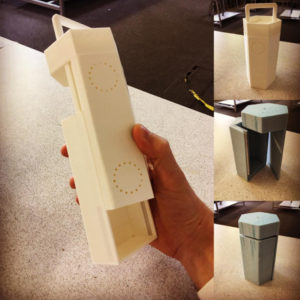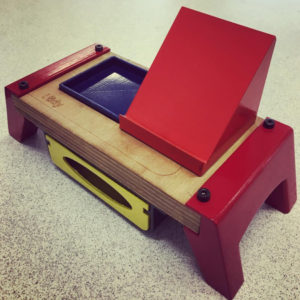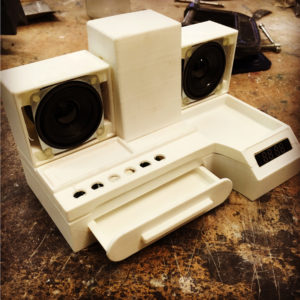 3D printing is making its way into educational curricula around the world. As more students gain access to technological training early in their educations, the younger generations will be more prepared for the higher-tech future ahead of them. A well-educated workforce, after all, is the best way to overcome a lingering skills gap as technologies including additive manufacturing continue to develop quickly. The educators at the forefront of these efforts are paving the way for a spreading focus in the STEAM curriculum, which highlights science, technology, engineering, arts, and mathematics at a variety of levels, from grade school through higher education. Examining their work to bring 3D printing into classrooms allows a glimpse at what may be possible at any age level, and hopefully serves as inspiration for educators seeking to integrate technology into their own teaching toolboxes.
3D printing is making its way into educational curricula around the world. As more students gain access to technological training early in their educations, the younger generations will be more prepared for the higher-tech future ahead of them. A well-educated workforce, after all, is the best way to overcome a lingering skills gap as technologies including additive manufacturing continue to develop quickly. The educators at the forefront of these efforts are paving the way for a spreading focus in the STEAM curriculum, which highlights science, technology, engineering, arts, and mathematics at a variety of levels, from grade school through higher education. Examining their work to bring 3D printing into classrooms allows a glimpse at what may be possible at any age level, and hopefully serves as inspiration for educators seeking to integrate technology into their own teaching toolboxes.
Phil Hall teaches Product Design at The Windsor Boys’ School, a UK-based school for boys that has roots drawing back to 1908 (and a sister school, The Windsor Girls’ School, for female students), educating students aged about 13 to 19 years old. We’ve followed several of Hall’s efforts in 3D printing previously, as he has worked with his students over the years to create unique projects using technology as a tool to understand the dynamics of product design. Hall is an award-winning teacher whose efforts are increasingly being recognized across the UK and internationally as he continues to champion the use of 3D printing in education. Key to his classroom philosophy is teaching his students not just how to hit print on a plug-and-play desktop 3D printer, but how to fully design their own products from scratch and learn the entire process of putting a functional project together.
As he readies for another busy school year, Hall has graciously taken some time in his summer to share his thoughts with us as we continue to put the spotlight on educators working with 3D printing.
Please tell us about your background and how you came to teach at The Windsor Boys’ School.
“I have been teaching at The Windsor Boys’ School for the past seventeen years (although it doesn’t feel like it!) and it is the only school that I have worked in on a permanent basis. Prior to this, I completed my PGCE (Post Graduate Certificate of Education) in Design & Technology at Loughborough University where I spent short amounts of time training in two Secondary schools which were local to the University. This was an amazing and eye-opening experience but I did question whether teaching was the right profession for me. One school was brilliant and pretty straight forward to teach in whereas the other was very challenging; two completely different experiences which taught me a lot about the profession. My degree is a BSc in Industrial Design but this was done in a time long before any mainstream 3D printing was available!
I only applied to work at The Windsor Boys’ School out of curiosity really. I never expected to be offered a job at what was/is such an outstanding school. The school is a comprehensive school but has tried hard to retain its traditional Grammar school background/ethos.”
 What drew your academic interest to product design? How are your classes structured, and for what age groups?
What drew your academic interest to product design? How are your classes structured, and for what age groups?
“I’ve always loved Product/Industrial design for its creative and yet academic nature. It’s all well and good sketching and modelling pretty things for design sake but there must be an understanding of the product and its requirements-it must have a purpose and functionality and meet the user needs. Young designers also need to consider the moral, social and environmental impact that their products will have.
At The Windsor Boys’ School we try to make the pupils understand that the subject is not all about creating pretty forms for themselves-these are not vanity projects. Designing for a third party-a client-really helps the pupils see things differently. From the age of 15, pupils undertake projects which are entirely focussed on design for others-either individuals or communities.”
When did you first become interested in 3D printing?
“Interest in 3D printing was ignited when we were successful in a bid to ‘win’ a printer for the Department. In 2012 to 2013 the Department for Education looked to explore new and innovative ways of teaching science, technology, engineering and mathematics (STEM) and design subjects that realised the full potential of 3D printers in the classroom. We were fortunate enough to be one of 21 schools chosen for this pilot scheme.
The printer we were ‘given’ was a MakerBot Replicator — the laser cut plywood one — and also one session of CAD training using Autodesk Inventor.
From the training, it was easy for me to see the potential that this technology had in education. Everything that I have learnt since this initial training has been self-taught and has involved a lot of trial and error but it has been worth it.
In the past 5 years I estimate that I have racked up 1000’s of CAD and printing hours. It’s all about seeing the benefit for the pupils, not the personal ‘cost’ to me.
After the 1 year pilot scheme ended, we managed to hold on to the printer and invest in more machines for the Department.”
How and when did you decide to include 3D printing in your classroom?
“It was decided very soon after receiving our first printer, that the pupils needed to use this technology. They were going to be a part of the learning curve that I was on. As soon as pupils saw the machine in the classroom there was an instant interest-a buzz-and the question ‘when do we get to use it, sir?’ was heard a lot.
It was initially quite scary as pupils’ expectations were far greater than my ability and the limitations of the machine at this time. There was quite a lot of failure and compromise in what we did. The beauty of 3D printing (mixed with enthusiasm) is that progress is made quite quickly and you can swiftly improve what you are doing. Soon, small but well made parts were being churned out. The growth from this point becomes exponential. Pupils begin to buy in to the process and push the boundaries. They challenge you and your understanding of what can be achieved.
We spent a lot of time in the early years producing final presentation models for the pupils’ projects. These were fantastic and they served a purpose but would take hours and hours to print but, importantly, there was very little learning to be gained from them.
More recently, we have found what I believe is the real use for 3D printing in education; prototyping. An important part in the design process is in the development stage where products need to be refined through several iterations. This is where 3D printing comes into its own. Our pupils now use printing as a learning tool rather than a model making one. Having the ability to CAD model and print a design for a component part in the space of a lesson is now something that our pupils take almost for granted. The learning outcomes that come from having a detailed, accurate and sometimes complex part to interact with, analyse and evaluate are unbelievable.
In my opinion this is where 3D printers have found their niche in education.”
What types of reactions did your students / the administration have when you first introduced 3D printing to your syllabus?
“In the early stages when there was a lot of failure and we were printing random geometric shapes, I don’t think that other teachers or senior leaders could see or understand what I was so enthusiastic about. They didn’t see it as a ‘game changer’; more a novelty or new toy which had a lot of limitations.
I don’t think that printing Yoda heads, downloaded from Thingiverse, helped either as this had no educational value at all (one of my pet hates is teachers who promote downloading models rather than teaching their pupils the skills to be creators).
As the pupils became more confident with the CAD software and started to print off parts which were directly linked to their projects (and the link between printing and learning was made) staff and leaders started to take note.
We soon reached a point where the learning value for pupils, by having printers, was so strongly visible that the PTA (Parent Teacher Association) invested in more printers for us in order to meet the demand for prints being made by the pupils.
We have now reached a stage where printing amazing parts and models has almost become second nature or common-place.
It is only when visitors from other schools or companies come to have a look at what we are doing that we are reminded that we are ‘up there’ as far as using 3D printing in schools in the UK goes.
Being awarded the 3D Printing Industry Award for outstanding teaching, earlier this year, was confirmation that we are doing a great job here at The Windsor Boys’ School with regards to embedding 3D printing in the curriculum.”
 How do new and returning students react now, a few years later?
How do new and returning students react now, a few years later?
“Students have returned during their university courses to use our facilities, which is a great compliment for us. They are really grateful to us for giving them a head start on their peers. Many of the students on their courses haven’t used CAD let alone printed anything which is something I find quite shocking. They also comment that, although they were using this technology in the early days, they wished they were starting again because of what we now know we can achieve with 3D printing.
They are fully aware that we gave them a great start and the skill-set to go forward and be successful in further education.
We still get the ‘wow’ factor with new students. They can’t wait to have one of their designs printed in plastic. They bring the excitement to something that I see as normal now which is brilliant, otherwise complacency can creep in.”
What are your hopes for the growth of 3D printing in STEAM curricula in the UK / around the world?
“I can really only speak from the perspective of what is happening in the UK education system. My own hopes seem to be at odds with what is actually happening (or not). The dream is to have at least one printer in each school being used across curriculum areas to enhance the learning of pupils in all manner of subjects, from Geography to Music. The reality here in the UK is far from this. I recently contacted D&T departments across the UK asking for feedback about how they utilise 3D printing in their departments. The responses shocked me. Some schools are doing great things- pupils are being up-skilled in CAD and are using their printers effectively. Others, however, through no fault of the teacher, simply have not bought into 3D printing. Lots of schools don’t have access to a printer (budget constraints don’t allow for expenditure on such items) or if they do own one, are simply using it to print from sites such as Thingiverse because training in CAD has not been made available to the teacher. The problem exists because there is nothing which says that schools must deliver 3D printing in the curriculum, not even in D&T. Until this changes, schools can choose not to opt in and senior leaders not to invest.
We are living in a world where 3D printing exists in industry. Our pupils will be entering this world and need to have these skills if they are to be competitive. I believe that the current government is failing today’s pupils by not providing access to and training for, this technology.”
How does exposure to CAD design / 3D printing / advanced technologies in school benefit students looking to ahead their future educational and career pursuits?
“Exposure to these technologies gives an advantage to those pupils skilled in utilising them. As previously mentioned, the working landscape is changing rapidly. 3D printing is bringing about another industrial revolution. Multi-national companies such as GE, Boeing, Nike, Ford, Hasbro, Mercedes Benz (the list goes on!) are already using 3D printing extensively and this will continue to grow. Apart from these global employers increasing their use of 3D printing, the 3D printing market itself is projected to boom (currently worth nearly $5 billion it is expected to grow to over $20 billion by 2020) proving that this technology is here to stay. How, as schools and educators, can we afford to ignore this? I read only yesterday a quote which, as D&T is under threat of being wiped from the UK curriculum, I found quite profound:
‘All we know about the new economic world tells us that nations which train engineers will prevail over those which train lawyers. No nation has ever sued its way to greatness.’ – Richard Lamm.”
Can you think of any particularly meaningful or poignant projects / moments you’ve experienced since you brought this technology to The Windsor Boys’ School?
“Any print that we do which has enabled a pupil to make a positive learning outcome is a good and worth-while print. The first truly successful print was a special one. I still have it and intend to take it with me wherever I end up. It was physical milestone and the beginning of my, and indirectly hundreds of pupils’ journeys, into 3D printing.”
 Do you have any advice for educators looking to incorporate 3D printers in their classrooms?
Do you have any advice for educators looking to incorporate 3D printers in their classrooms?
“There are lots of things which I wish someone had told me 5 years ago and would have saved me a lot of time and frustration. The most important thing I would say to other teachers would be to take up the opportunity (if you are offered it) to get a 3D printer, OR don’t stop pestering the important people in the school until they get you one.
- When you have your printer, don’t be precious about it; use it all the time. Have it on display-generate an interest around the school in it.
- Encourage teachers from other departments to get involved-it will enhance their subject as well as D&T.
- Don’t be put off by failed prints — it happens. Learn why it happened so that you can put it right.
- Start a 3D printing club.
- Get to know your machine — be able to take it apart because at some point you are going to have to!
- Start producing parts for pupils’ projects and show them off-prove to the senior staff that 3D printing is not a gimmick and does really help enhance pupils’ learning. Get your students to enthuse about it-they are your greatest asset.
- Contact local schools — let them use your printer. This will hopefully encourage/enable them to invest in their own.
- Build relationships with local businesses or 3D print companies/suppliers. The companies I have dealt with have been truly amazing, helpful, knowledgeable and generous.
- Skill yourself up in CAD-this is so important if you are to empower your students with the ability to be creators rather than ‘downloaders’. Only when pupils can create their own designs will you truly see the benefits of 3D printing in education.”
Hall’s advice underscores much of what we often hear as the call for education with 3D printing becomes ever-louder. Failure is not only a part of the process of iterative creation, but an important one that teaches valuable lessons in the design process; it is only through failure that many lessons will take root. Furthermore, the creation of a community around 3D printers will help to solidify in-house support for projects, technical issues, and more, and will help to spread the word beyond the classroom.
By teaching students to fully design their own creations and be responsible for the full process surrounding product design, Hall offers his students a thorough understanding of technology as it can be put to use in his subject area — as well as a tool they are, demonstrably, using in their futures beyond secondary ed classrooms.
Share your thoughts in the Phil Hall forum at 3DPB.com.
[All photos provided courtesy Phil Hall]
If you are interested in sharing your story, or know an educator we should get in touch with, please reach out any time. Send us an email or connect on Twitter. We’re looking forward to sharing your stories. Find all the features in this series here.
Subscribe to Our Email Newsletter
Stay up-to-date on all the latest news from the 3D printing industry and receive information and offers from third party vendors.
You May Also Like
3D Printing Financials: Fathom Struggles in Financial Quicksand During Critical Transition
Facing a year of key transitions and financial pressures, Fathom (Nasdaq: FTHM) has filed its annual report for 2023 with the U.S. Securities and Exchange Commission (SEC). The document outlines...
Latest Earnings Overview for Australian 3D Printing Firms Titomic and AML3D
Australian 3D printing manufacturing firms Titomic (ASX: TTT) and AML3D (ASX: AL3) reported their financial results for the period from July to December 2023, marking the first half of their...
3D Printing Webinar and Event Roundup: April 7, 2024
Webinars and events in the 3D printing industry are picking back up this week! Sea-Air-Space is coming to Maryland, and SAE International is sponsoring a 3D Systems webinar about 3D...
3D Printing Financials: Unpacking Farsoon and BLT’s 2023 Performance
In the Chinese 3D printing industry, two companies, Farsoon (SHA: 688433) and Bright Laser Technologies, or BLT (SHA: 688333), have recently unveiled their full-year earnings for 2023. Farsoon reported increases...



